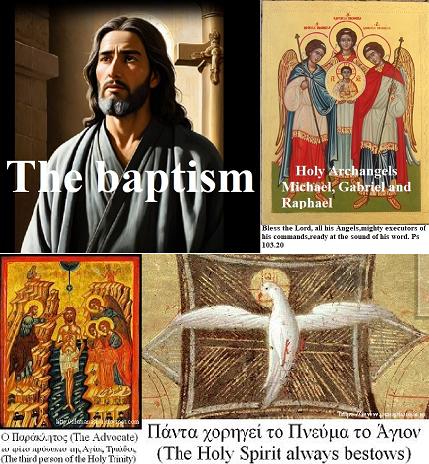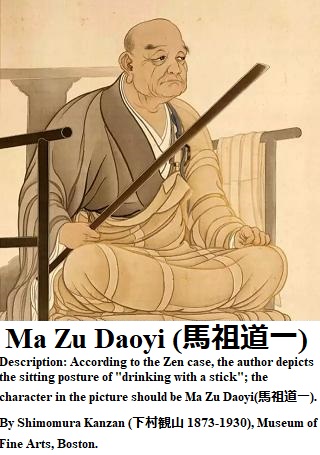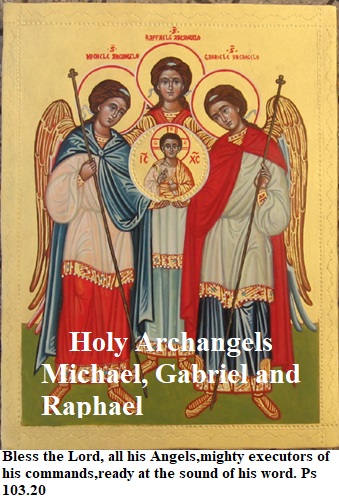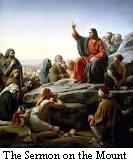The baptism of The Holy Spirit, which had been transmitted to India by one of the Twelve, Didymus Thomas, who is honored as the twin of Jesus (Both Didymus and Thomas mean twin in Greek and in Aramaic respectively.), was brought into the tradition of aphoristic teaching of Zen Buddhism and then sublimated into riddle-like koans. ("The Original Jesus - Buddhist Sources of Christianity" by Elmer R. Gruber & Holger Kersten)
Now, I present you "Zen Buddhism and Nestorianism Series 01:The Origin of Zen Buddhism," YouTube version of the slide show introducing my book "Zen Buddhism and Nestorianism."
I plan to upload the "Zen Buddhism and Nestorianism Series" to YouTube multiple times in the future. I hope you will enjoy watching them.
However, when I checked the above content embedded in the HTML text on my PC browsers, there were no problems with "Microsoft Edge" and "Opera," but "Google Chrome" and "Firefox" displayed "Error 153 Video player settings error" and the video would not play. However, when I clicked on the "YouTube" display in the error field, I was able to access the video directly on "YouTube" and play it.
I will continue to strive to improve in the future, so I would be very happy if you could take a look.
--- ---
Mo wangxiang (Stop your deluded thought!)
There was a Zen monk, who held up "Mo wangxiang(莫妄想: stop your deluded thought!)" as the sole banner of his school and became famous during Tang Dynasty of China. Whenever he received questions from students would reply by saying, "Do not have deluded thoughts." And in his later years he received an imperial order from the 15th Emperor Muzong (穆宗reigned 820-824)and lived in Fen-zhou of Shanxi Province and was known as the Zen master Fenzhou Wuye(汾州無業禅師).
At the age of 9, this man received the Mahayana Sutra(大乗経) from Zen Master Zhi-ben(志本) of Kai-yuan-si (開元寺) Temple, memorized the Five Element Theory thoroughly, shaved his head at the age of 12, and at the age of 20, he received the precepts under Buddhist discipliner You(幽律師) of Xiang-zhou(襄州) and studied Sifenlvshu(四分律疏) and then taught the Nirvana Sutra(涅槃経) to monks. Thus, he appears to have been an excellent person who was well versed in Buddhist studies in his youth.
There was a Zen master called Mazu Daoyi (馬祖道一709-788) who had established Hongzhou school(洪州宗), one of major sects of the Zen Buddhism, based at the Kaiyan-si (開元寺)temple in Hongzhou(洪州) of Jiangxi province(江西省) in China at that time. He emphasized everyday life itself than studying scriptures or meditation and taught students using extraordinary actions and tactics suited to each occasion. He is also known with his many wise remarks, such as, "The ordinary mind is the way(平常心是道)," "Each mind is a living Buddha(即心即仏)," "Actions are Buddha-nature(作用即性)," and so on. Therefore, young Wuye also decided to visit Zen Master Mazu Daoyi.
Seeing this young man's dignified appearance and hearing his voice sounding like a big temple bell, Matsu said, "The Buddha Hall is magnificent, but there is no Buddha inside."
The young man knelt down and asked honestly, "Although I have studied the literature of the Three Vehicle Sutras(三乘経), that is, vehicle of the hearers(声聞), vehicle of the pratyekabuddhas(縁覚) and vehicle of the bodhisattvas(菩薩), and have heard the Zen teaching of 'Immediate Mind is the Buddha(即心是佛),' I still do not understand it."
Then Mazu replied, "That's what you said, 'I still don't understand.' There's nothing else."
The young man then asked again, "What is the Mind Seal that Bodhidharma came to the West and handed down to us?"
Mazu said, "Hey, Guy of Great virtue, you are little annoying. Just leave it at that for today and come again.''
When the young man was about to leave, Mazu abruptly called out to him in a loud voice, "Oi, great virtue!" When the young man turned around, he yelled, "What are you doing?" When the young man suddenly realized this and prayed, Mazu chided him, saying, "What are you doing at this hour, you idiot?"
[Zen master YunJu(雲居), holding his staff(錫杖), says: What is it about Fenzhou(汾州) that is so noisy? ] (Jingde Chuandeng-lu Volume 28)
YunJu-DaoYing(雲居道膺:830-902), who is said to have been the head of disciples of DongShan-LiangJie (洞山良价:807-869), the founder of the CaoDong School (曹洞宗) of Zen Buddhism, gave advice to each scholar who participated in Zazen (坐禅) with this koan(公案), while shaking his cane(錫杖) and said, "Now, tell me what is bothersome about Fenzhou."
Actions are Buddha-nature
From the beginning, above the causes of the enlightenment of Zen master Wuye has been used as a koan for "Zuoyong ji Xing(作用即性:Actions are Buddha-nature)." "Zuoyong" means "action," that is, 'human activity' or 'the very existence of human beings' is Buddha-nature.
The characteristic of Mazu Zen was that it did not make people understand his Zen style, that is, 'extraordinary actions and tactics suited to each occasion,' as ideals, but rather made them realize them as living facts in their own lives through questions and answers. He called this principle "Zuoyong ji Xing(作用即性:Actions are Buddha-nature)."
According to Professor Takashi Ogawa(小川隆) of Komazawa University(駒澤大學), question-and-answer sessions in the Tang Dynasty were a one-off incident that occurred naturally during the life of an ascetic. In the Song Dynasty, the records of the questions and answers of our predecessors were selected and compiled as classics shared by the Zen school, and these were given to monks in training as subjects for their training. The records of the questions and answers of our predecessors that came to be used in this way are called "koans(公案)."
During the Song Dynasty, the standardization of koans as teaching materials and teaching methods progressed. The methods of studying "Koan" can be roughly divided into two types: "Wenzi-chan(文字禅)" and "Kanhua-chan(看話禅)". "Wenzi-chan" attempts to clarify Zen by making full use of the knowledge of classical poetry and writing short comments on the koan, composing the purpose of the koan in poems, and adding commentary in prose. On the other hand, "Kanhua-chan(看話禅)" refers to "Huatou(話頭)", that is, ``watching'' the koan, but specifically, it involves focusing one's whole body and soul on one koan, pushing one's consciousness to the limit, and reaching its peak. This means that one can experience an absolute great enlightenment by causing an explosive attack on one's mind. (Excerpt from Professor Takashi Ogawa's article "From Tang Dynasty Zen to Song Dynasty Zen: Mazu and Dahui" published in Komazawa University Zen Research Institute Annual Report No. 32. December 2020)
Origin of Koan
So, why did the records of the questions and answers of Zen's predecessors come to be called koans (court cases)? This seems to be deeply related to the doctrine of ``the last day = final judgment'' preached by Nestorians.
The Greek word Parakletos ('ο Παρακλητος) in the Chapter 15 verse 26 of the Gospel of John ("When the Counselor comes, whom I will send to you from the Father, the Spirit of truth who goes out from the Father, he will testify about me.") is translated to 'Comforter,' 'Counselor' and 'Advocate' in the English Bibles, that is. the King James Version (KJV), the New International Version (NIV) and the New Living Translation (NLT) respectively. The hard work for the each translator can be seen there.
The original text of Q Source that the author of The Gospel of John referred to here should be the following description of verse 88 of The Gospel of Thomas.
Jesus said, "The messengers and the prophets will come to you and give you what belongs to you. You, in turn, give them what you have, and say to yourselves, 'When will they come and take what belongs to them?'" (Thomas 88)
That is to say, what the Spirit of truth will give to us has belonged to us from the beginning. Therefore when we are baptized also depends on ourselves, or when we are prepared. In other words, when we have discovered that we have been one with God from the beginning, we will be baptized with the Holy Spirit.
The Fusion of Bodhidharma and Nestorianism
Zen Buddhism was brought to China by Bodhidharma from India during the Northern and Southern Dynasties period (439-589), and it merged with Nestorian Christianity, which penetrated into China around the same time, and seems to have exploded into popularity during the Tang Dynasty (618-907).
In 635 AD, Alopen (阿羅本: Abraham) led 21 Jingjiao followers, headed to China and met Emperor Taizong (太宗) of the Tang (唐) Dynasty and presented a Chinese translation of the Bible. Then Jingjiao was officially authorized to propagate in China. These facts are recorded on 'Daqin Jingjiao Popular Chinese Monument (大秦景教流行中国碑: Nestorian Stele),' which was discovered in Xi'an (西安) in the 17th century by the Society of Jesus (Jesuits). However, this is an official record, and it appears that the Jinngjiao followers had been preaching in China before then.
Kukai's friendship with the Nestorians
In 804, Kukai, the founder of Japanese Esoteric Shingon school (日本真言密教) of Buddhism, took part in a government-sponsored expedition to China. The court of Tang Dynasty (唐朝) granted Kukai a place in Xi Ming Temple (西明寺) in 805. After that, Kukai studied Shingon Esoteric Buddhism from Qinglong Monastery (青竜寺)'s seventh ancestor Huiguo (恵果746–805), and was recognized as the eighth ancestor of the Shingon sect.
Kukai learned Sanskrit from Panruo Sanzang (般若三蔵), a friend of Jingjing (景浄) who was the author of the inscription of Nestorian Stele (景教碑). Therefore, Kukai seems to have had friendships with Jingjing and other Jingjiao followers such as Yisi (伊斯Isaac) who were active in Chang'an (長安) at that time.
For this reason, there is the imitation monument of Nestorian Stele given by Mrs Elizabeth Anna Gordon (1851–1925), a Jingjiao researcher, to Mt. Koya (高野山), the headquarters of Japanese Esoteric Shingon school, in Wakayama Prefecture (和歌山県).
'Shizun bushi lun' and 'the Sermon on the Mount'
The contents of the third volume of 'Shizun bushi lun (世尊布施論The Lord of the Universe's Discourse on Alms-Giving)', owned by Kyoto Nishi Honganji Temple (京都西本願寺), almost corresponds to 'the Sermon on the Mount' in a Chinese translation of the Gospel of Matthew, which was written by Jingjiao followers, and a part of Adam's birth story is also seen there.
Therefore, "Baptism with the Holy Spirit" of Thomas, who is said to have been the twin brother of Jesus, seems to have been fused with Mahayana Buddhism and Taoism after he had brought it to India and China, where these tide of thought were emerging at that time, and to have contributed to the flourishing of Pure Land Buddhism and Zen culture as well as birth of Islam.
An anecdote about the birth of Zen Master Wuye
By the way, at the beginning of Jingde Chuandeng-lu, Part 28(景徳伝灯録巻), it has an introduction reminiscent of the New Testament's "Annunciation." It says, "One night, a girl from the Li family(李氏) in Shangluo(上洛), Shangzhou City(商州市), Shaanxi Province(陝西省), heard a voice in the air asking "if I could stay there", she found out that she was pregnant. After ten days and ten months, the birthing house was filled with divine light, and the girl gave birth to a boy. As soon as this boy, whose common name was Du-shi(杜氏), was able to crawl, he sat on lotus position and meditated.
- Zen Buddhism and Nestorianism≪The baptism with the Holy Spirit and Dharma's Mind Seal≫ -
Purchase here
What is "Baptism with The Holy Spirit"?
According to the dialectic of the Gospel of John,
【Thesis】
"A man can possess eternal life through accepting testimony of the Son of man and being baptized by him." (John 5:24)
【Anti-thesis】
But "The one who comes from the earth cannot accept the testimony by one from heaven." (John 3:32)
How then can a man possess eternal life?
【Synthesis】
"If you want to be baptized with the Holy Spirit, you can just go back to the word which was with God in the beginning (John 1:1) and certify that God is truthful. (John 3:33)"
When he said, "You are Huichao," Zen Master Fayan thrusted vivid Self in Huichao in front of his eyes.
Purchase here
○One world:
Your Comments / Unsubscribe
SEAnews Messenger
SEAnewsFacebook
SEAnews eBookstore
SEAnews world circulation











